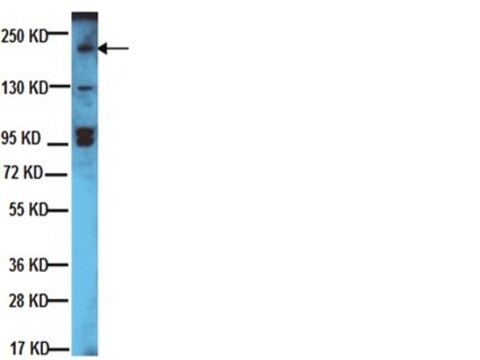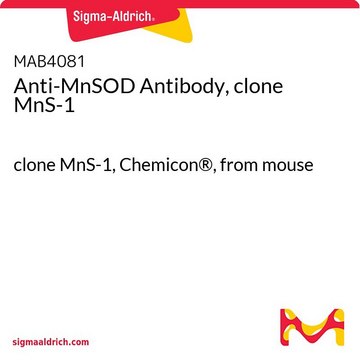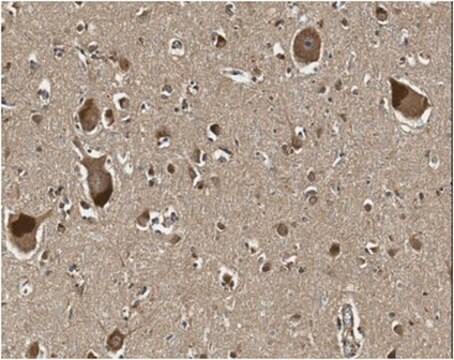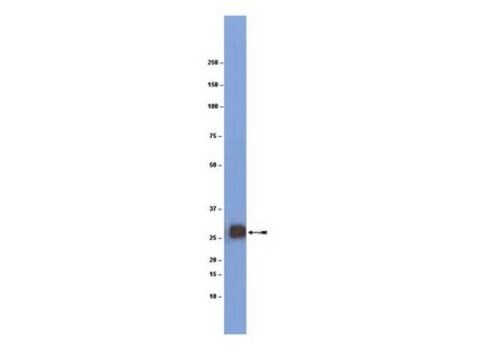05-390
Anti-erbB-3/HER-3 Antibody, clone 2F12
clone 2F12, Upstate®, from mouse
Sinónimos:
Tyrosine kinase-type cell surface receptor HER3, lethal congenital contracture syndrome 2, v-erb-b2 avian erythroblastic leukemia viral oncogene homolog 3, v-erb-b2 erythroblastic leukemia viral oncogene homolog 3 (avian)
About This Item
Productos recomendados
biological source
mouse
Quality Level
antibody form
purified antibody
antibody product type
primary antibodies
clone
2F12, monoclonal
species reactivity
human, bovine, mouse, rat
manufacturer/tradename
Upstate®
technique(s)
immunocytochemistry: suitable
immunohistochemistry: suitable
immunoprecipitation (IP): suitable
western blot: suitable
isotype
IgG2aκ
NCBI accession no.
UniProt accession no.
shipped in
wet ice
target post-translational modification
unmodified
Gene Information
human ... ERBB3(2065)
General description
Specificity
Immunogen
Application
4 µg of a previous lot of this antibody immunoprecipitated erbB-3/HER-3 from human MDA and MCF-7 RIPA lysates.
Immunocytochemistry:
10 µg/mL of a previous lot of this antibody gave positive immunostaining for erbB-3/HER-3 in MCF-7cells fixed with 95% ethanol/5% acetic acid.
Immunohistochemistry:
1:50 and 1:100 dilution of a previous lot detected erbB-3/HER-3 membrane staining in human normal and carcinoma breast tissue.
Signaling
Growth Factors & Receptors
Quality
Western Blot Analysis:
0.1-2 µg/mL of this lot detected erbB-3/HER-3 in RIPA lysates of human MCF-7 cells. Previous lots have detected erbB-3/HER-3 in MDA RIPA lysates.
Target description
Physical form
Storage and Stability
Handling Recommendations:
Upon receipt, and prior to removing the cap, centrifuge the vial and gently mix the solution. Aliquot into microcentrifuge tubes and store at -20°C. Avoid repeated freeze/thaw cycles, which may damage IgG and affect product performance.
Analysis Note
Human breast adenocarcinoma (well-differentiated), mouse brain lysate, MCF-7 cell lysate.
Other Notes
Legal Information
Disclaimer
¿No encuentra el producto adecuado?
Pruebe nuestro Herramienta de selección de productos.
Optional
Storage Class
12 - Non Combustible Liquids
wgk_germany
WGK 2
flash_point_f
Not applicable
flash_point_c
Not applicable
Certificados de análisis (COA)
Busque Certificados de análisis (COA) introduciendo el número de lote del producto. Los números de lote se encuentran en la etiqueta del producto después de las palabras «Lot» o «Batch»
¿Ya tiene este producto?
Encuentre la documentación para los productos que ha comprado recientemente en la Biblioteca de documentos.
Nuestro equipo de científicos tiene experiencia en todas las áreas de investigación: Ciencias de la vida, Ciencia de los materiales, Síntesis química, Cromatografía, Analítica y muchas otras.
Póngase en contacto con el Servicio técnico







